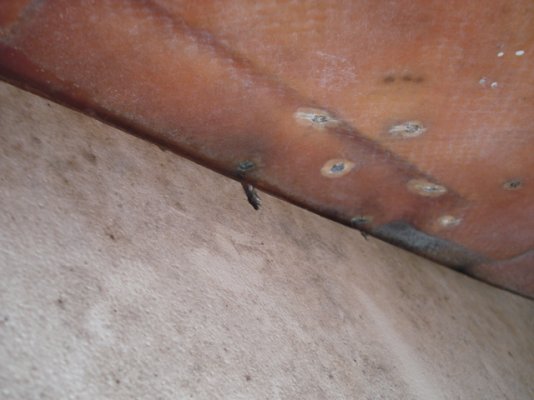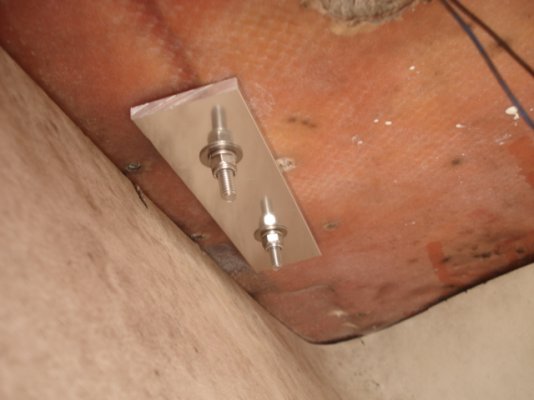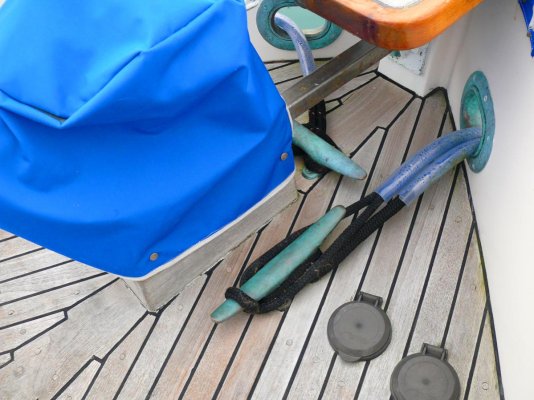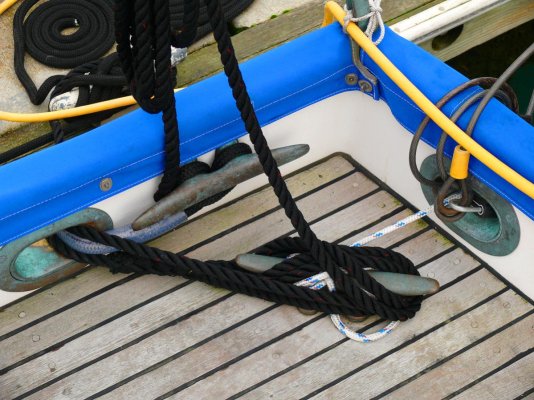Earl34Mainship
Senior Member
- Joined
- Oct 19, 2012
- Messages
- 175
- Location
- US
- Vessel Name
- Gone Coastal
- Vessel Make
- 2005 34' Mainship Trawler


Just out of curiosity, I wondered how secure the bow cleats on were my 2005 34’ Mainship trawler since I get a lot of wind and wave action here. I googled “ripped out cleats” and got thousands of hits so this isn’t an unheard of event. I thought I’d find reinforcement under the cleats, but as photo 252 shows, there isn’t any. Sure, there’s something inside the gunwale – maybe that composite material that can be drilled and tapped, or even a sleeve inside the gunwale that the 5/16” bolts screw into, but preferring to be safe over sorry, I reinforced the cleats with ¼” marine grade aluminum plates that are 2” wide X 8” long. The OEM bolts didn’t extend past the under surface, so I found matching Phillips head (SS) bolts at West Marine and replaced (screwed) the longer bolts through the deck and used flat washer/locking washer, and locking nut. See photo 285. I would have preferred a 1 ¾” bolt, but the 1 ½” bolt from WM had was too short, so I ended up with a 2” bolt. If I were to do this again, I’d cut the bolt to 1 ¾”. There are 4 bolts on each cleat, but the 2 on the outside can’t be reached and the 2 on the inside are the ones that would get the stronger dock line pull. If I were to do this again, I would opt for a 3” wide plate – there’s room for a wider plate. Plates were $5.00; washers and nuts were $7.00. This might prevent ripped out cleats.


